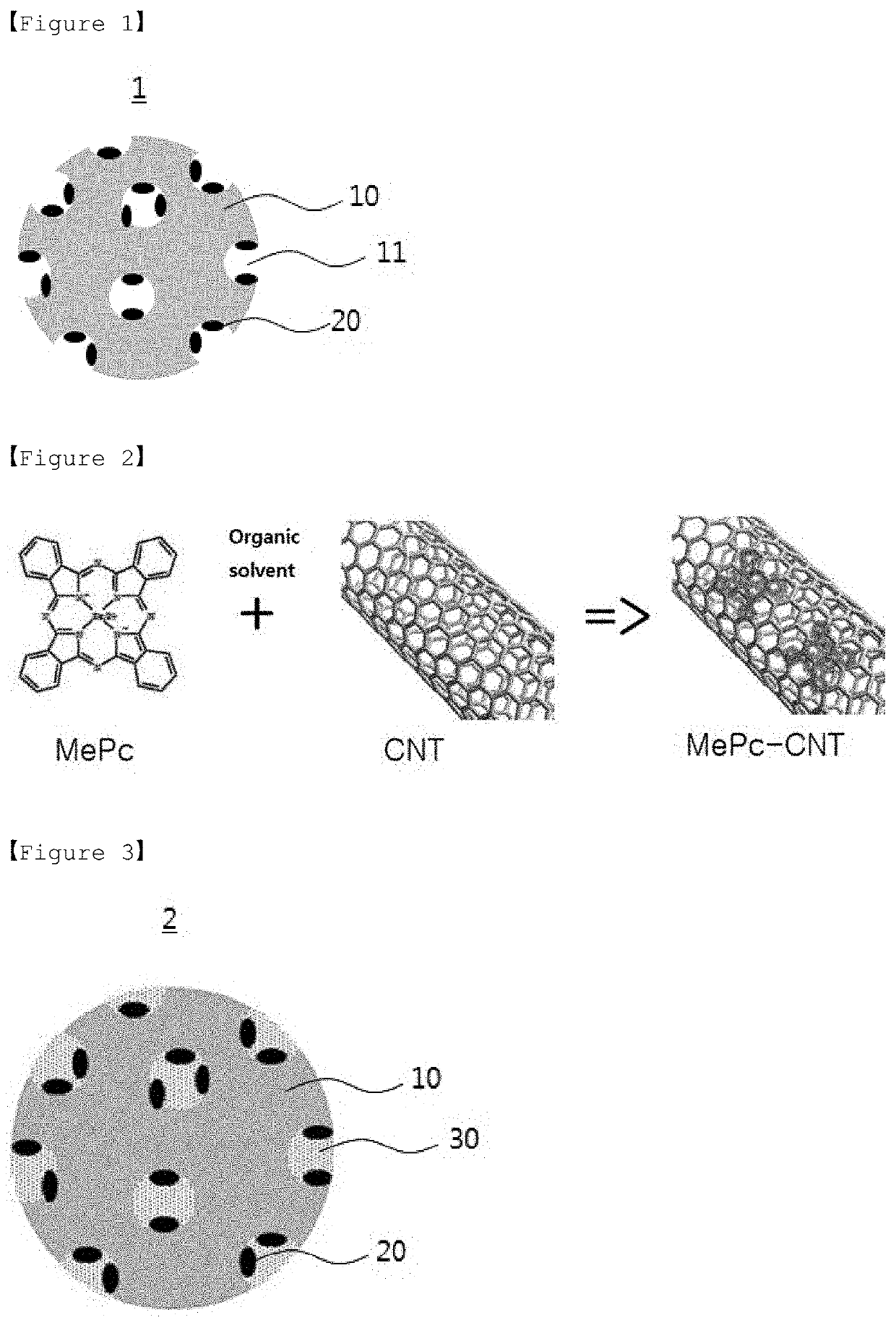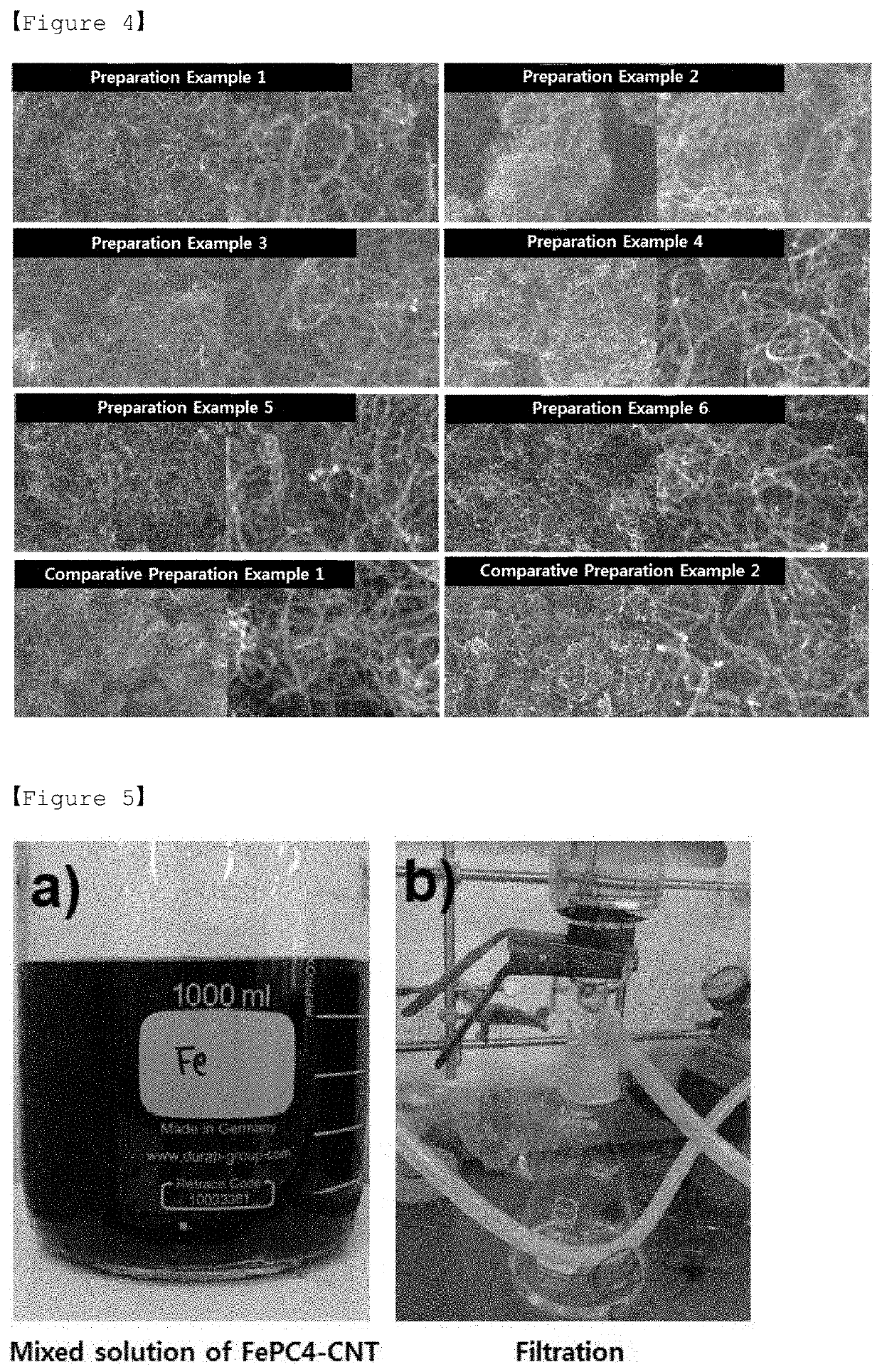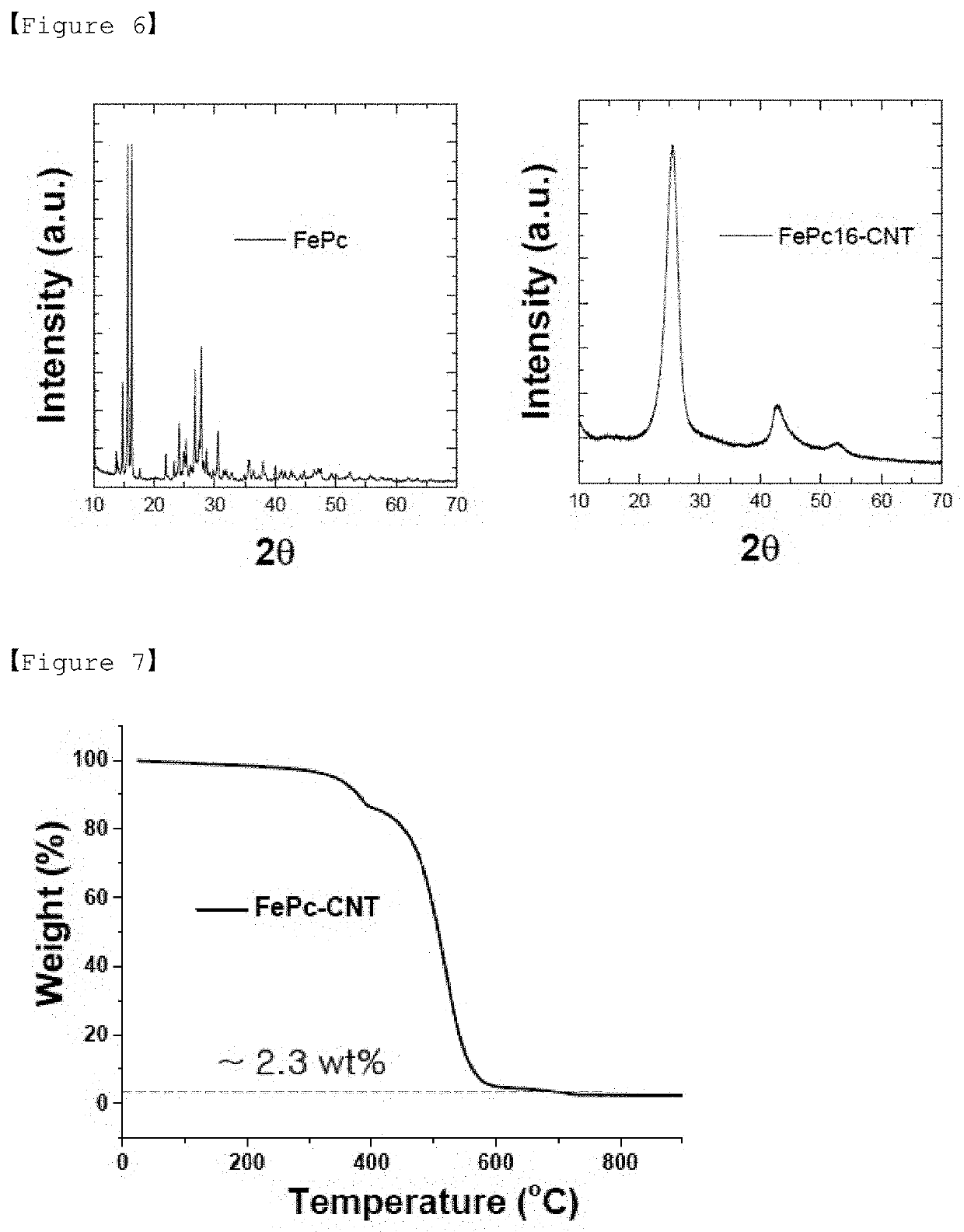Lithium secondary battery
a secondary battery and lithium technology, applied in the field of lithium secondary batteries, can solve the problems of difficult use as a positive electrode material for a lithium-sulfur secondary battery, inability to transfer electrons, and inability to achieve the effect of improving the reaction rate (kinetic), improving the initial discharging capacity and lifetime characteristics of the battery
- Summary
- Abstract
- Description
- Claims
- Application Information
AI Technical Summary
Benefits of technology
Problems solved by technology
Method used
Image
Examples
experimental example 2
paring Process of the Positive Electrode Catalyst
[0156]FIG. 5 is a photograph showing a mixed solution (mixture of FePC4-CNT) formed by dissolving precursor (FePC) of the transition metal composite and porous carbon (CNT) in an organic solvent (DMF) and the process of filtration in Preparation Example 1.
[0157]Referring to FIG. 5, it can be seen that FePC is strongly adsorbed to CNT through π-π interaction. In general, FePC has a characteristic of showing a strong blue color even when only a small amount is dispersed in the solution. The mixed solution of FePC4-CNT showed a bluish color, but the blue color was disappeared in the filtered solution. From this, it can be seen that FePC was adsorbed on the CNT.
experimental example 3
ion Analysis of Positive Electrode Catalyst
[0158]An experiment for structural analysis of the positive electrode catalyst (FePC4-CNT) prepared in Example 1 was performed.
[0159]FIG. 6 is a graph of x-ray diffraction (XRD) for the precursor (FePC) of the transition metal composite and positive electrode catalyst (FePC16-CNT) used in Preparation Example 6.
[0160]Referring to FIG. 6, it can be seen that in the case of the positive electrode catalyst (FePC16-CNT) prepared in Preparation Example 6, since the single molecule of FePC was evenly distributed on the CNT, the XRD pattern of FePC did not appear in the XRD of FePC16-CNT.
[0161]In addition, an experiment for the component analysis of the positive electrode catalyst (FePC16-CNT) prepared in Preparation Example 6 was carried out.
[0162]Thermogravimetric analysis (TGA) is a device that measures the change in mass with increasing temperature in an air or N2 atmosphere. When FePC is heat-treated under air condition, organic substances suc...
experimental example 1
Discharging Capacity and Lifetime Characteristics of Lithium-Sulfur Secondary Battery
[0166]Experiments on initial discharging capacity and lifetime characteristics of the lithium-sulfur secondary batteries prepared in Examples 1 to 6 and Comparative Examples 1 and 2, respectively were conducted.
[0167]Experimental results were measured for each lithium-sulfur secondary battery at a condition of 2.5 cycles at 0.1 C (0.55 mA·cm−2) charging / 0.1C (0.55 mA·cm−2) discharging, cycles at 0.2 C (1.1 mA·cm−2) charging / 0.2 C (1.1 mA·cm−2) discharging, and thereafter 0.3 C (1.65 mA·cm−2) charging / 0.5 C (2.65 mA·cm−2) discharging.
[0168]FIGS. 8a and 8b are graphs showing initial discharging capacity (FIG. 8a) and coulombic efficiency (FIG. 8b) of lithium-sulfur secondary batteries prepared in Example 1 and Comparative Example 1, respectively.
[0169]Referring to FIGS. 8a and 8b, Example 1 (S / FePC4-CNT) was found to have a significantly improved initial discharging capacity and improved overvoltage c...
PUM
| Property | Measurement | Unit |
|---|---|---|
| pore size | aaaaa | aaaaa |
| pore size | aaaaa | aaaaa |
| particle diameter | aaaaa | aaaaa |
Abstract
Description
Claims
Application Information
 Login to View More
Login to View More - R&D
- Intellectual Property
- Life Sciences
- Materials
- Tech Scout
- Unparalleled Data Quality
- Higher Quality Content
- 60% Fewer Hallucinations
Browse by: Latest US Patents, China's latest patents, Technical Efficacy Thesaurus, Application Domain, Technology Topic, Popular Technical Reports.
© 2025 PatSnap. All rights reserved.Legal|Privacy policy|Modern Slavery Act Transparency Statement|Sitemap|About US| Contact US: help@patsnap.com



